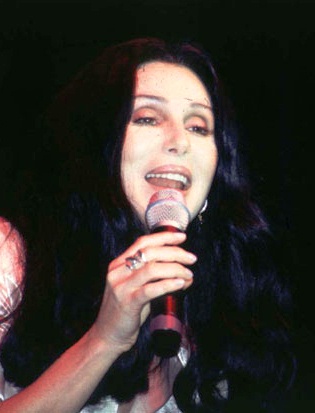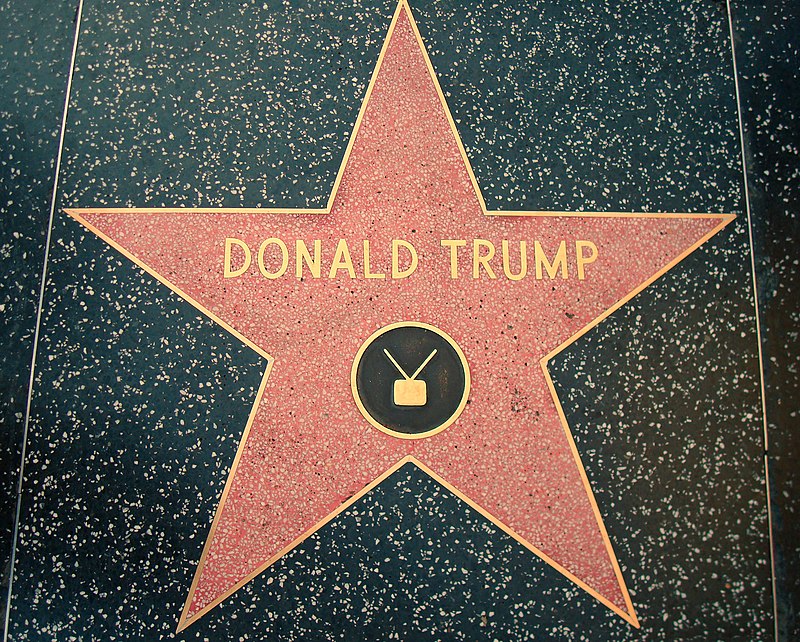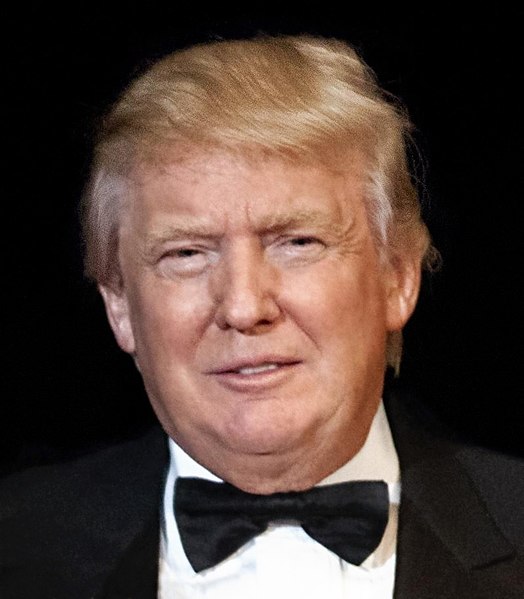We all know that he’s a loud mouth full of
himself. That, like his predecessor, P.T. Barnum, the
master of humbug, he loves publicity and is a genius at getting
it. That, again like Barnum, he makes
grandiose claims unsubstantiated by facts.
That he lives big and wants everyone to know it. That he’s a fighter and fights nasty. That he’s a billionaire, though the latest annual
Forbes magazine list of the 400
richest Americans credits him with a mere $4.5 billion, and not the $20 or $200
billion that he claims, which makes him only no. 129 on the list.
So why feature him in a post? Why, as my friend John asked, should I give
him more publicity, when he already has more than his share of it and covets even more? Because he’s a New York phenomenon, and this
post is all about New York. Because
there are other things about him, some good and some bad, that we should know,
a few of them surprising. Because his
antics can be amusing. And because,
whatever publicity I give him, this post won’t go viral, won’t make a speck of
difference in how the great mass of people regard him. But I’ll put my two cents in anyway, so all
aboard for The Donald.
Donald Trump today stands tall and straight
at 6 foot 3, his well-preserved features topped by a mop of bright blond hair
carefully sprayed into place, his suits expensive and his shirts monogrammed,
with silk ties and gold accessories. His
latest biographer, who had several interviews with him until Trump cut him off,
describes him as a rooster in a tuxedo, or a Hollywood star all wardrobed up
for a role as an executive. Enhancing
his image is his office in the luxurious Trump Tower on Fifth Avenue, where one
wall is plastered with magazine covers adorned with his features; his
penthouse apartment there is valued at $100 million. As for hopping about the world, he has his
private jet, a $100-million Boeing 757 with the name TRUMP blazoned on its
sides in big gold letters, and whose seat belts fasten with gold-plated buckles. No question, he moves about in style. Here now are twelve things about him we all
ought to know.
 |
| Adamkriesberg |
1. His parents
His father, Fred Trump, was
the son of a German immigrant who came to this country in steerage, made money
in Alaska, and invested in real estate in Queens. Fred Trump too invested in real estate, focusing
on the outer boroughs while keeping clear of Manhattan. Tough, savvy, and inventive, he knew how to
cultivate judges and politicians, and to buy up mortgaged properties cheap –
lessons not lost upon his son. His
advice to Donald: “Be a killer.”
The Donald’s mother, Mary Anne MacLeod,
was a Scottish immigrant who went from poor beginnings to accompanying her
husband as he made the rounds in a Rolls Royce collecting rents.
Both his parents were superior beings,
Trump insists, and thanks to them he has good genes that make him better at
everything from golf to business.
(A note on Fred Trump. A friend of mine and her husband once rented
an apartment from him on Staten Island.
Not in good shape, the apartment was overrun with roaches. One winter they were about to go off on a
trip, but her husband got the flu and had to stay behind. The day after she left, he heard fierce
pounding on the door. Feverish, he
dragged himself to the door, found two burly men with crowbars who were trying
to break the door down. They were
surprised to see him.
“What are you doing?” he asked.
“We’re here to evict you,” the bigger one
announced, waving a piece of paper from Trump Management.
“I paid my rent,” said the husband,
showing a receipt. He had indeed, but
eight days late.
“Too bad, we gotta getcha out.”
Her husband, big and broad-shouldered,
announced, “You may get past me, but it’ll ruin your day.”
The bluff worked; they hesitated, they left. But if he had gone off with his wife, the two men
would have come, battered the door down, and put all their furniture out in the
snow, and a new lock on the door. You
didn’t fool around with Fred Trump.)
2. His love of
fighting
Donald Trump’s love of
fighting – all kinds, including physical – dates back to his youth. If attacked, he counterattacks, no matter who
the perceived assailant is, a celebrity, a journalist, or the federal
government, and in so doing he always insists that he is the party
wronged. Today, in the age of the
Internet, he knows he can use Twitter and Facebook to reach millions and
clobber any unfavorable book or news item almost as soon as it appears.
3. His dread of
being a sucker
He dreads being seen as a
loser. Suckers are those who cling to
the sidelines and watch others – people like Trump -- acquire wealth and
power. He sees life as a relentless
battle, a struggle for survival of the fittest, and he means to be a winner.
4. His charm
Yes, this mountain of ego has
charm, can be likable. When offstage, or
onstage when it’s to his advantage, he oozes it. When schmoozing, he shares supposed secrets,
is ready with praise, and offers sympathy, thus creating a kind of synthetic
friendship. He admits to having a con
man’s talent for persuasion. To pull off
a deal, along with connections and insider status, he uses charm.
5. His kindness
Yes, this bully can be
kind. His employees describe him as
demanding, but generous with pay and benefits.
His former chauffeur tells how Trump paid for the doctor’s bills
stemming from his wife’s pregnancy, calls him “a good guy.” A loving father, too, even though he’s gone
through three wives to date. And when a
boy of ten with terminal cancer asked to be “fired” by Trump on his TV reality show
The Apprentice, where the losers were
always fired by him, Trump couldn’t bring himself to utter the words “you’re
fired”; instead, he gave the kid a check for several thousand dollars and told
him to go have the time of his life.
6. His optimism
For all his talk of a
struggle for survival, he is an optimist, an advocate of the “power of positive
thinking” of Norman Vincent Peale, whose church he and his father
attended. He has experienced many
bankruptcies (of his properties, never of himself), many defeats, but always
bounces back.
7. Trump on
Trump
He has lots to say about
himself. For example:
I only go first-class.
Part of the beauty of me is
that I’m very rich.
I was never a drinker. I was never a drug guy, and I was never a cigarette guy.
I’ve been much more successful
than people even admit.
I am the creator of my own
comic book, and I love living in it.
I don’t like to analyze
myself, because I might not like what I see.
8. Trump on
others
Of Graydon Carter, a founder
of the gossip magazine Spy, which had
pilloried him more than once: “A
sleazebag.” Or, alternatively: “A scumbag.”
Of Jamie Dimon, the CEO of banking
giant J.P. Morgan Chase, for settling a case with the Justice Department for
$13 million, instead of fighting it: “The worst banker in the United States.”
Of President Obama: “Stupid.”
Of Hillary: “If Hillary Clinton can’t satisfy her
husband, what makes her think she can satisfy America?”
Of the elderly actress Kim
Novak: “She should sue her plastic
surgeon.”
9. Others on Trump
Michael D’Antonio, his latest
biographer: “A rooster in a tuxedo.”
Attack-dog attorney Roy Cohn,
whom Trump had often employed: “Donald
pisses ice water.” (For more on Cohn,
see post #137.)
Playgirl magazine: “One of the ten sexiest men in America.”
An acquaintance: “That Donald, he could sell sand to the
Arabs.”
His first wife, Ivana: “He’s the people’s billionaire.”
David Segal of the Washington Post: “The people who know the least about
business admire him the most, and those who know the most about business admire
him the least.”
Columnist Clarence Page of
the Chicago Tribune: “He knows how to turn audacious and even
obnoxious narcissism into pure gold.”
His son Donald Jr.: “The person who hates Trump the most still
wants to get his picture with him when he walks by.”
The New York Daily News, when he announced he was running for
President: CLOWN RUNS FOR PREZ.
Gossip columnist Liz
Smith: “I’ve known him forever, and I
can’t figure him out.”
10. His fights
When insulted by Trump, Kim
Novak felt so humiliated that she took shelter in her home and didn’t go out
for weeks. But others were tougher and
met him taunt for taunt: singer/actress Cher, Mayor Ed Koch, and hotel owner Leona
Helmsley, known also as the Queen of Mean.
 |
| M Abancourt |
Cher of Trump: “Loudmouth racist cretin.”
Trump to Cher: “I promise not to talk about your massive
plastic surgeries that didn’t
work.”
 |
Trump: “The city under Ed Koch is a disaster.”
Koch: “If Donald Trump is squealing like a stuck
pig, I must have done something right.”
Trump: “Koch is a moron.”
Koch: “Piggy, piggy, piggy.”
(For more on Ed Koch, see
post #101.)
 |
| Smiling through adversity: her mug shot when arrested on various charges, including tax evasion. |
Trump of Helmsley: “Vicious… horrible … a living nightmare.”
Helmsley of Trump: “Sick … a skunk … I wouldn’t believe Donald
Trump if his tongue was notarized.”
(For more on Leona Helmsley,
see post #81.)
All the participants in these
public exchanges show themselves at their grade-school worst.
11. His hair
It fascinates friend and foe
alike. Fearing baldness, he uses special
creams and evidently had a surgical procedure to close a bald spot on the back
of his head. He has denied having
surgery, but circa 1990 his brown hair was mysteriously transformed into a
swirl of reddish gold, with strands from one side to another, and from back to
front. Speculation raged in the media,
and Time magazine published an
account of how hair grown long in back can be combed forward, then swept back
and fixed with a spray. Insisting that
his hair is his own, Trump sometimes invites visitors to pull on it. Meanwhile, costume makers have begun selling
Trump wigs for Halloween.
 |
| This photographer got him from behind. Sneaky, what? Imagine this hairdo protected by the Secret Service. BostonJerry |
12. The primacy
of image
With Donald Trump, image
trumps reality (no pun intended). This
explains his preoccupation with the confection topping his pate, and much
else. Everything depends on his keeping
his name out there as an image of wealth and success. His face has appeared on the cover of countless
magazines. There is a Trump Tower, a
Trump Plaza, a Trump Park, and by the start of this century there were – albeit
briefly -- Trump steaks, Trump loans, and a website called GoTrump.com.
 |
| The Trump Tower on Fifth Avenue. As unpretentious as The Donald himself. Ingfbruno |
From 2005 to 2010 there was also a Trump
U, offering retreats on “wealth preservation” and “creative financing” for a mere $5,000 each, and much more. Even though this was sponsored by a man whose
business ventures have ended in multiple bankruptcies, students flocked. Since then the Attorney General of New York
State has filed a lawsuit claiming that Trump U was not a bona fide university
but simply an overpriced how-to-get-rich program making bogus claims, and there
are class-action lawsuits filed by disenchanted former students in California.
The success of the reality TV show The Apprentice depended on contestants
competing against one another for a one-year job with a glamorous businessman
named Trump, and more than 215,000 people applied to be among the first 16
contestants on the show. Because
whatever his critics say, and no matter how many business failures he has racked
up, or how many polls show that most Americans dislike him, lots of us still
love what he offers; we feast on the image, not the fact, of success.
Final thoughts
Donald Trump has little time
for reflection or analysis, just blurts out his thoughts regardless of the
consequences. This pleases many voters,
who notice the contrast with Hillary Clinton’s cautious, calculated
approach. This brashness passes for
candor, though some might call it folly or imprudence. But is he serious? He offers many an outlandish opinion with a
grin or a scowl or a poker face, as if daring others to guess if he really
means it or not. Michael D’Antonio, his
most recent biographer, knows him as well as anyone can, and believes that
Trump’s 2000 presidential campaign was “the first true pseudo-campaign in the
history of the presidency, a determined effort to exploit the political process
by a man whose real purpose was profit.”
Or profit and self-aggrandizement.
So is his 2016 effort, under way already, another pseudo-campaign? Serious or not, it’s my opinion that, if he
sees he won’t be the Republican candidate, he will bow out with a grin,
as if it all really was a joke.
Why? Because he can’t stand being
labeled a loser.
 |
| His star on the Hollywood Walk of Fame. |
And let’s face it, we Americans do like
risk-takers, do admire wealth and success, do want to achieve them for
ourselves. And we do envy those who
strive big and get away with it, or get away with it almost. So maybe The Donald is us, blown up to
gigantic and offensive proportions.
Alas.
But clowns belong in a circus, not the
White House.
 |
| Michael Vadon |
Source note: For much of the information in this post, I
am indebted to Michael D’Antonio, Never Enough: Donald Trump and the Pursuit
of Success (St. Martin’s Press, NY: 2015).
D’Antonio does an excellent job of interpreting the vast amount of
information available. He interviewed
many people who have known Trump, and was granted several interviews with Trump
himself, until The Donald cut him off.
The book: The second giveaway has ended; all quiet on the Western front. But a possible holiday gift, if you want to be seasonal. Available from Amazon and Barnes & Noble and elsewhere.

Coming soon: Buildings That Change: the site of a famous murder and of a catastrophic collapse; a prison that gets gentrified; a landmark movie theater that turns into a gym; and a Bible house that just plain disappears. If you’re as tired of the super rich as I am, this will be a change. And change is what New York City is all about.
©
2015 Clifford Browder




